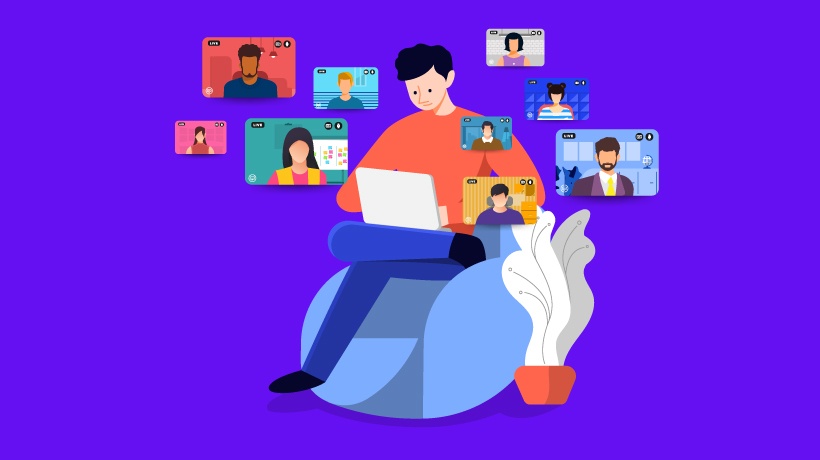The Benefits Of Closed Captioning eLearning Courses
Closed captioning eLearning courses may require more resources, but they may be worth the investment, thanks to the many benefits they offer. If you're on the fence about whether closed captioning eLearning is going to be a worthwhile endeavor, especially if you want to get your eLearning course launched as soon as possible, have a look at these notable advantages of closed captioning eLearning courses.
- It offers greater accessibility.
Closed captioning will allow not only the deaf and/or hard of hearing learners to access your eLearning course, but also those who use English as a second language. These learners are able to use the captions to fill in the comprehension gaps they may have from listening to the eLearning course audio. In addition, individuals who may have special learning needs can benefit from closed captions, as closed captions enable them to view text that corresponds with what they hear, in order to improve their understanding of the subject matter. Therefore, closed captioning eLearning courses can appeal a much wider eLearning audience, making it more accessible to those who may not have had the opportunity to participate in the eLearning experience otherwise. - It appeals to a broader range of learning needs.
Rather than just having audio present the subject matter, closed captioning eLearning courses add that all-important visual element. This means that they appeal to a broader range of learning needs. Those who may get better results with visual or text-based eLearning materials, for example, are now able to fully comprehend the ideas and concepts, rather than having to struggle through an audio-only eLearning course. They are able to read and listen to every presentation, making it a more complete and effective eLearning experience. As eLearning professionals, our primary goal is to create eLearning courses that give the same educational opportunity to each member of our audience. By closed captioning your eLearning course, you gain the ability to reach as many learners as possible, even those who may not necessarily respond well to audio-based multimedia components. - It boosts knowledge retention.
When your learners are able to hear and read your eLearning course content, the information you are providing is more likely to end up in their long term memory banks. Rather than just hearing the content, they have the opportunity to boost their knowledge retention and comprehension. For example, if a learner is listening to an audio presentation, but he/she isn't quite sure what a particular word means, it may be difficult to look up that specific term. On the other hand, if the word is spelled out right on the screen, then he/she will be aware of exactly how to spell it and he/she can then search for it online in order fully understand its definition. Learners are also more likely to better remember the eLearning content itself, thanks to the fact that they can see a visual representation of it. This means that they will get more out of the eLearning experience and they will be able to recall the information at a later time, such as on the job or in the real world when they really need it. - It meets with compliance standards.
If you are planning on uploading any of your eLearning materials to platforms like iTunes Store or Amazon Instant Video, then closed captioning is necessary in order to meet compliance standards. In 2012 The Disability Rights Education and Defense Fund won a lawsuit that was filed against Netflix. As a result of this, anyone who submits content to these platforms will now have to include captions for their viewers. If you don't comply with this regulation you may be subject to fines or other penalties. - It increases the visibility of your eLearning course.
Due to the fact that closed captioning eLearning produces text for your eLearning course, it can also improve your SEO (Search Engine Optimization) and boost your eLearning course sales. Therefore, not only are you more likely to increase your online visibility and reach a wider audience, but those who do participate in your eLearning course are probably going to be so satisfied with their eLearning experience that they spread the word via social media and come back for additional eLearning courses themselves. In essence, closed captioning eLearning courses stand out among the countless other eLearning courses that are currently online, so that learners who can truly benefit from them are able to easily find them. - It enables your eLearning course to be accessed anytime, anywhere.
With mobile device usage on the rise, more and more learners are now accessing eLearning courses on their phones and tablets. As such, if you offer closed captioning eLearning course, your audience has the chance to participate anytime, anywhere, even if they are in a noisy or crowded environment. Rather than having to wait until they get home to benefit from the eLearning material your are offering, they can tune in whenever it's most convenient for them. This is particularly essential because learners want on-demand learning. They are more likely to access and become active participants in your eLearning course if they can fit it into their busy schedules. Closed captioning eLearning makes this possible. If most members of your audience are in the middle of a chaotic office or riding on the bus, they can still get a comprehensive eLearning experience.
All in all, closed captioning eLearning courses offer a wide range of benefits for both eLearning professionals and their audiences. Think about closed captioning your next eLearning course to provide your learners with a more effective and powerful eLearning experience.
If you're interested in tips on how to add closed captioning in your eLearning courses, check out the article 6 Tips For Closed Captioning eLearning Courses for top tips that will take the headache out of your closed captioning eLearning course development.








